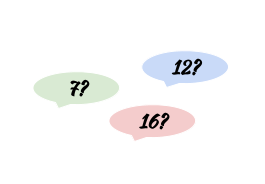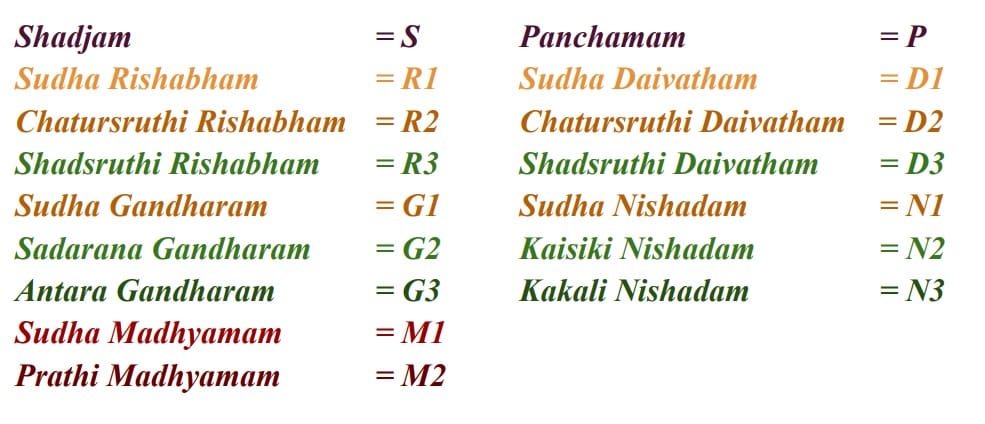
Table of Contents
Can you even think of making words without alphabets? Is it possible to communicate without letters or meaningful words? Similarly, without swaras, there would be no Music.
Swaras are the notes/alphabets that form the base of all ragas and compositions. Just like ABCD, we have 7 letters in Carnatic music. They are “S R G M P D N”. These 7 swaras are called the Saptaswaras.
The Saptaswaras form the foundation of melody. Each swara is aligned to a certain sruthi / pitch and each sound gives a unique tone. The swaras can be sung in ascending or descending order, which is called the Arohana and Avarohana.
1. Saptaswaras and its Nomenclature

Now comes a little twist. If there are only 7 swaras, then how come the keyboard or harmonium have 12 notes in an octave?
As we discussed, these swaras are not just alphabets. All swaras have a particular position that acts as the different shades of the 7 basic swaras. These positions are called Swarasthanas. There are 12 swarasthanas in total and they are called Dwadasa swaras. These specific swarasthanas are combined together in arohana and avarohana to form a Raga. So basically ragas are a mix of swaras and swarasthanas.
The swaras/notes are classified into 2 groups

a. Prakruthi Swaras
They are the natural swaras, with constant position and those are Shadjam and Panchamam. For example, the swaras Sa and Pa will be the same in raga Mayamalavagoula, Kalyani, Sankarabharanam and all other ragas.
b. Vikruthi Swaras
The swaras that have various swara positions are called Vikruthi swaras. They are also called artificial notes. These swaras use different shades of a specific swara in different ragas. Rishabham, Gandharam, Madhyamam, Daivatham and Nishadam are the vikruthi swaras. For example, the raga Mohanam uses the 2nd variety of Rishabham. While in Malahari, we can see the 1st shade of Rishabham.
2. 12 Swarasthanas

These swarasthanas are given in different shades to easily understand the differences between them and also to understand that the varieties are formed from a single swara same as the different shades of a color.
And here comes the next twist!!
Most of the music learners, who reached geetams will be confused with the number of swarasthanas. Because, from geetams onwards, we will start learning new ragas other than Mayamalavagoula. So there we will use more than 12 swarasthanas.
But how?

We musicians follow Dwadasa swaras/12 swarasthanas in any kind of music except Carnatic music. In Carnatic music we accommodate 16 swaranamas in the place of 12. These 16 swaranamas are called Shodasa swaras.
Lets see some examples:


Imagine these 7 swaras as a ruler which have equal intervals of time. And then give names for these swarasthanas as given above (S, R1, …) In a raga like Mayamalavagoula it uses R1 and in Kalyani it uses R2. But the other raga like Ganamurthi uses both the R1 & R2.
So this makes no sense, as it's not aesthetically allowed. Instead, it uses some temporary swarasthanas like R3, G1 & N1, D3. So let's mark the different shades of swaras now.

3. Nomenclature of 16 Swara Namas

-Anagha Murali
Carnatic Vocals SME
Spardha School of Music
